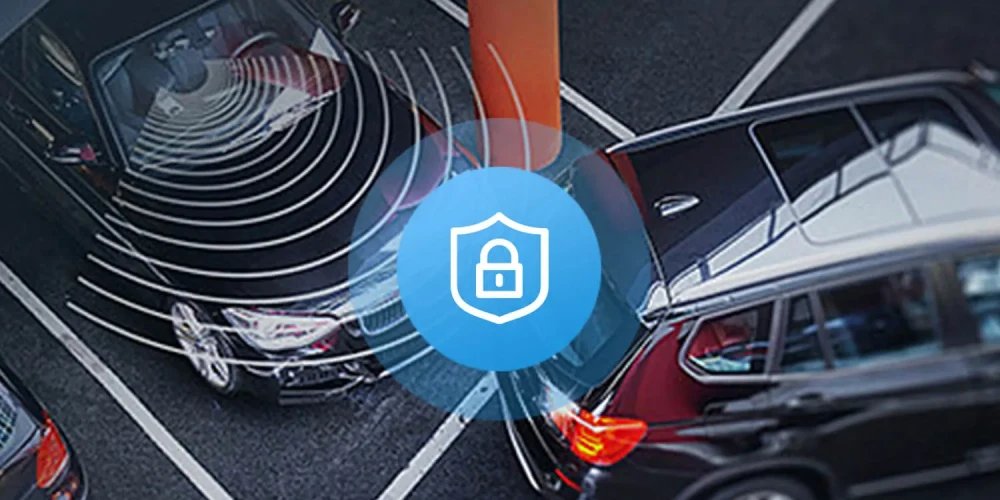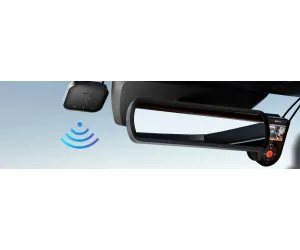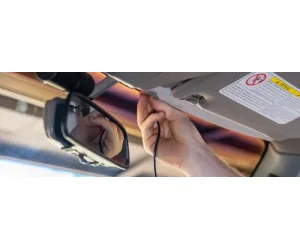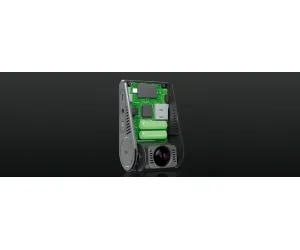
When shopping for a dash cam, you may have come across the term "G-sensor." But what exactly does it mean, and why is it an essential feature in a dash cam? In this article, we'll explore what a G-sensor does, how it works, and why it's crucial for enhancing the functionality of your dash cam.
Understanding the G-Sensor
A G-sensor, short for Gravity Sensor, is a built-in microelectromechanical system (MEMS) accelerometer in a dash cam that detects sudden changes in motion or impact. This sensor is designed to recognize abrupt movements, such as sudden braking, sharp turns, or collisions. When such an event occurs, the G-sensor automatically triggers the dash cam to save and lock the footage, preventing it from being overwritten.
How Does a G-Sensor Work?
The G-sensor operates based on motion detection and acceleration using MEMS technology. It measures the force exerted on the vehicle in three axes (X, Y, and Z), which correspond to:
- X-Axis: Forward and backward movement (acceleration and deceleration)
- Y-Axis: Side-to-side movement (sharp turns or swerving)
- Z-Axis: Up-and-down movement (sudden jolts, potholes, or crashes)
MEMS accelerometers work by detecting capacitance changes between microscopic structures inside the sensor when subjected to acceleration forces. The sensor then converts this data into electrical signals, which are processed by the dash cam’s firmware to determine whether an impact has occurred.
If the G-sensor detects a significant impact, it automatically moves the recorded video file to a protected folder, ensuring that critical footage is not erased when the dash cam continues recording in loop mode.
Why is a G-Sensor Important in a Dash Cam?
1. Preserving Crucial Evidence
In case of an accident, the G-sensor ensures that the footage of the impact is securely saved. This can be essential for insurance claims, police reports, and legal purposes.
2. Parking Mode Protection
Many dash cams use the G-sensor to activate parking mode. If your vehicle is parked and someone bumps into it, the G-sensor will trigger the dash cam to start recording. This helps capture hit-and-run incidents or vandalism. Some advanced dash cams also integrate AI-powered motion detection along with the G-sensor for enhanced surveillance capabilities.
3. Preventing Accidental File Deletion
Since most dash cams use loop recording, older footage gets overwritten when storage space runs out. The G-sensor prevents critical event recordings from being deleted, ensuring you always have access to important moments.
Adjusting G-Sensor Sensitivity
Most dash cams allow users to adjust the sensitivity of the G-sensor. If set too high, the dash cam may lock files due to minor road bumps, causing unnecessary storage issues. If set too low, it may fail to detect a significant impact. Finding the right balance based on your driving conditions is essential.
Typically, G-sensors have three adjustable sensitivity levels:
- Low Sensitivity: Ideal for highways or smooth roads, preventing false triggers from minor movements.
- Medium Sensitivity: A balanced setting for city driving, capturing moderate impacts.
- High Sensitivity: Best for high-traffic areas or parked cars, capturing even minor incidents like door dings or slight collisions.
G-Sensor Integration with Advanced Dash Cam Features
Modern dash cams incorporate the G-sensor with other advanced features for enhanced protection:
- Event-Triggered Recording: The G-sensor works alongside GPS tracking to log impact locations.
- Cloud Storage Syncing: Some high-end dash cams upload G-sensor-triggered footage to the cloud for remote access.
- ADAS (Advanced Driver Assistance Systems): Integrating the G-sensor with lane departure warnings and collision detection enhances road safety.
- AI-Based Impact Analysis: Some AI-driven dash cams analyze the G-sensor data to differentiate between false alarms and actual incidents.
- Emergency Lock Feature: Ensures that critical videos remain protected, even during continuous loop recording.
Best Dash Cam Features to Look For
When purchasing a dash cam with a G-sensor, consider other essential features to enhance your driving security:
- 4K or Full HD Resolution: Clearer video quality ensures readable license plates and road details.
- Night Vision: Ensures optimal recording quality even in low-light conditions.
- Wide-Angle Lens: Captures a broader field of view, reducing blind spots.
- Wi-Fi & App Connectivity: Allows real-time access and easy sharing of recorded footage.
- Super Capacitors Instead of Batteries: Provide better heat resistance and durability.
FAQs About G-Sensors in Dash Cams
1. What happens if my dash cam's G-sensor sensitivity is too high?
If the sensitivity is too high, the dash cam may trigger recordings for minor bumps and vibrations, leading to excessive locked files and storage issues.
2. Can I turn off the G-sensor in my dash cam?
Yes, most dash cams allow users to disable or adjust the G-sensor sensitivity based on their preferences and driving conditions.
3. Does the G-sensor work when my car is off?
Yes, if the dash cam has a parking mode feature, the G-sensor can detect impacts while the vehicle is parked and automatically start recording.
4. Will a G-sensor drain my car battery?
If your dash cam is hardwired or connected to an external power source, the power drain is minimal. Some dash cams also include voltage cutoff features to prevent excessive battery drain.
5. Are all dash cams equipped with a G-sensor?
Not all dash cams have a G-sensor. It is typically found in mid-range and high-end models that offer advanced security features.
6. How does a G-sensor enhance accident reporting?
The G-sensor locks footage immediately upon detecting an impact, ensuring that critical evidence is available for insurance claims or legal proceedings.
7. Can the G-sensor detect theft attempts?
Yes, in parking mode, a G-sensor can trigger recording if an intruder shakes or bumps the car, helping capture potential theft or vandalism.
Final Thoughts
The G-sensor is a vital feature in any dash cam, offering an extra layer of security by automatically saving critical footage during accidents or unexpected incidents. Whether you're using a dash cam for daily commuting, long road trips, or fleet management, having a G-sensor ensures that essential moments are recorded and protected.
When choosing a dash cam, make sure to check for G-sensor functionality and adjust its sensitivity to suit your needs. This small yet powerful feature, combined with modern AI, GPS, and cloud integration, can make a significant difference when it matters most.







